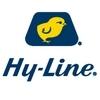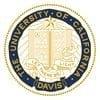Explore all the information on
Minerals in poultry nutrition
Minerals in poultry nutrition are typically classified as macro- or micro-minerals, depending on the levels needed in the diet. The macro-minerals include calcium, phosphorus, chlorine, magnesium, potassium, and sodium. Requirements for the macro-minerals are typically expressed as a percentage of the diet, while the requirements for the micro-minerals are stated as parts per million. Although the quantities required for micro-minerals are lower than for macro-minerals, they play an essential role in the body's metabolism. The micro-minerals include copper, iodine, iron, manganese, selenium, and zinc.
Dr. Brett Lumpkins (Southern Poultry Research) explains how to create balance in the microbiota, through a combination of factors, to prevent Necrotic Enteritis, during the 5th IHSIG Symposium on Poultry Intestinal Health in Bangkok, Thailand....
Comments : 1
Recommendations: 11
Introduction The use of in ovo technology is a very innovative field in the research and industry application, including novel means of vaccination and embryonic nutrient supplementation. As defined by the early work developed by Uni and Ferket (2003), in ovo feeding is the administration of exogenous nutrients and other agents into the amnion of the late-term avian embryo, and it can advance the development of the growing embryo before and after hatch. Similarly, in ovo feeding...
Comments : 0
Recommendations: 8
Enteric disorders are one of the most important groups of diseases which affect poultry production world-wide and they are continuing to cause high economic losses due to increased mortality rates, decreased weight gain, increased medication costs, and increased feed conversion rates (HAFEZ, 2011). Estimates of the annual costs of poultry-associated cases of salmonellosis and campylobacteriosis, two major causes of foodborne diseases in humans, in the United...
Comments : 1
Recommendations: 5
Introduction Vitamin D is a naturally synthesized lipid soluble vitamin and has a broad range of physiological properties, including profound effects upon immune system [1–3]. Ultraviolet B (UV-B) irradiation of epidermal cells constitutes the primary step for photolytic conversion of 7-dehydrocholesterol to Vitamin D. Modern poultry farming practices have led to an increase in density housing with minimal ultraviolet light B (UV-B) exposure. Thus, eggs produced from...
Comments : 0
Recommendations: 0
...
Comments : 1
Recommendations: 2


Prices Hold, Pressures Build: What’s Moving the Veterinary API Market
Suggested link
Peter Ferket, Professor at North Carolina State University, explained the importance of reducing mineral emissions and the benefits of perinatal nutrition, during IPPE 2017 in Atlanta, USA....
Comments : 3
Recommendations: 16
LIPTOSA , a Spanish company specialized in production of phytobiotics and nutraceuticals, presents to the market LIPTOSAFE®, a detoxifier, nutraceutical and performance improver for pigs and ...
Comments : 0
Recommendations: 0
John Brake, Distinguished Professor at North Carolina State University, explained the different benefits of potassium and phosphorus in meat quality, feed conversion and health, during IPPE 2017 in Atlanta, USA....
Comments : 5
Recommendations: 9
1. Introduction Sorghum is a problematic feed grain for chicken-meat production which has been considered in two reviews (Selle et al., 2010; Liu et al., 2015). A distinctive feature of sorghum is kafirin, the dominant protein fraction. Kafirin classically makes up 55% of sorghum protein and is present as discrete protein bodies located in the sorghum endosperm with a central core of a-kafirin enveloped by peripheral...
Comments : 1
Recommendations: 3
Latin American Scientific Conference
In October, 2016, the Poultry Science Association successfully held its first-ever Latin American Scientific Conference in Campinas, SP, Brazil.
One of the highlights of this conference was the symposium Update on Calcium and Phosphorus Digestibility in Poultry: Different Approaches and Implications.
...
Comments : 0
Recommendations: 4
Watsuma Srisa-ard, Manager Director of Eurotec Nutrition Thailand -a Silvateam distributor- testified about the use of Silvafeed® Tannin Polyphenol into the Asian Market, during Silvafeed Technical Seminar in Bangkok, before VIV Asia 2017....
Comments : 0
Recommendations: 2
Could we use hydrated lime Ca(OH)2 and quicklime CaO in poultry nutrition as a calcium source instead of limestone?...
Comments : 0
Recommendations: 0
Dr. Kirk Klasing talked about the nutrients that are needed, pathogens and balance, as well as impact on growth and reproduction, during CLANA 2016 in Cancun, Mexico. ...
Comments : 0
Recommendations: 9
BACKGROUND Calcium (Ca) is an essential nutrient for poultry that is generally provided to laying hens at approximately 4.6% of the total feed volume. Calcium is usually supplied to layers as a calcite grit or flour i.e. limestone (CaCO 3 ) and also as part of the inorganic phosphorus (P) supplye.g. dicalcium or monocalcium phosphate. Though, in some markets, meat and bone meal may also contribute...
Comments : 3
Recommendations: 0
The Australian Poultry Science Symposium is the premier avian science conference in Australia and attracts delegates from across Australia and from all around the World.
It will take place from Feb. 13-15 and the major themes will be Gut Health and Physiology, The Challenge of Low Protein Diets, Adult Bird Nutrition and Management, and Vitamin D in Eggs.
The 2017 event is going to be a very exciting one. We are moving away from the University Campus this year, into an inner...
Comments : 1
Recommendations: 0
IPPE 2017 International Seminar Luncheon
Feeding the future in a sustainable way requires innovation. At Trouw Nutrition, we are focused on finding new ways of achieving enhanced performance while reducing dependency on...
Comments : 0
Recommendations: 0
Poultry manure fertilizer contains all the essential nutrients required for crop production, and its value as an organic fertilizer and a source of plant nutrients has been recognized for centuries. Even with its beneficial effects on plant growth, however, manure constitutes only a small percentage of the nutrients applied to cropland when compared to commercial fertilizer. Poultry manure fertilizer is not used to its maximum...
Comments : 2
Recommendations: 0
...
Comments : 2
Recommendations: 1





















00167-168.jpg&w=3840&q=75)












